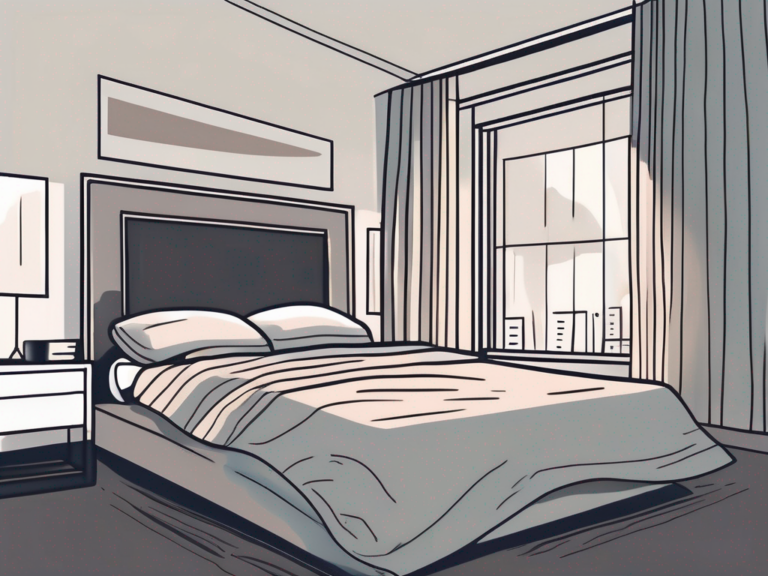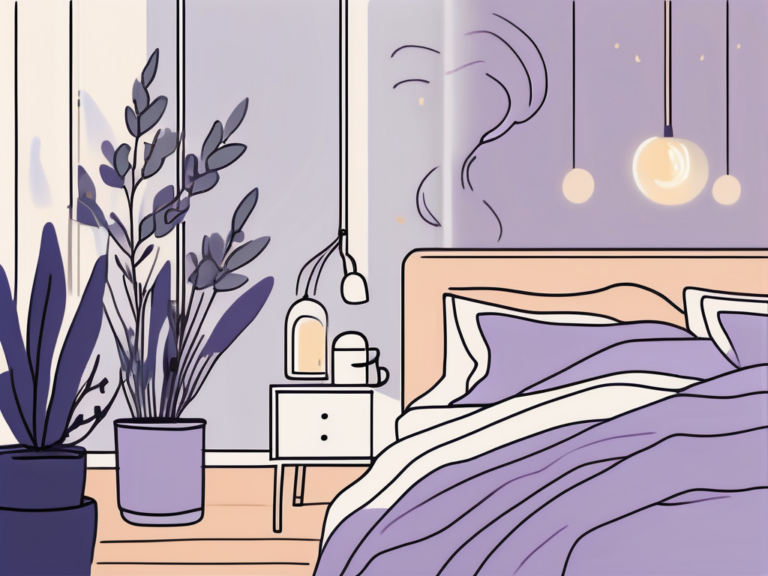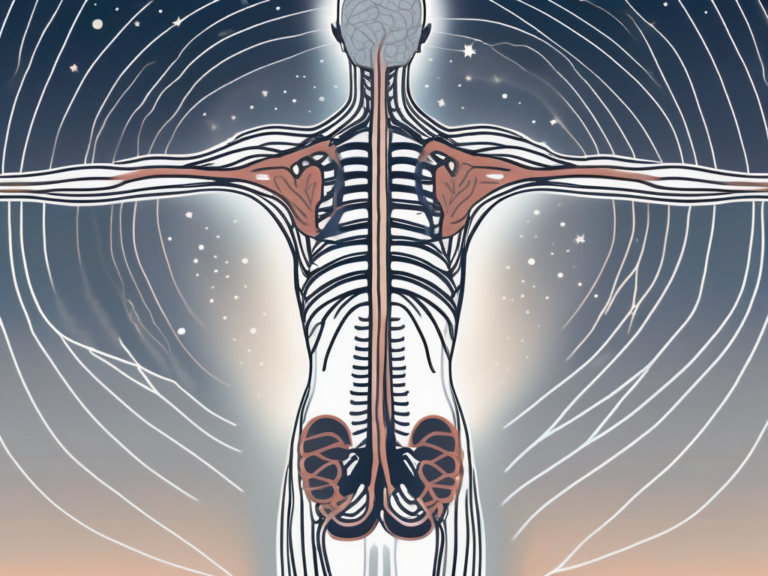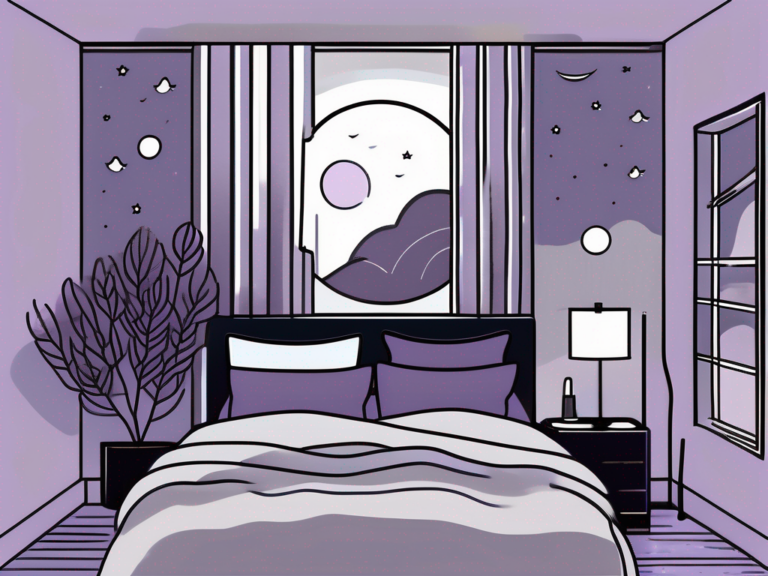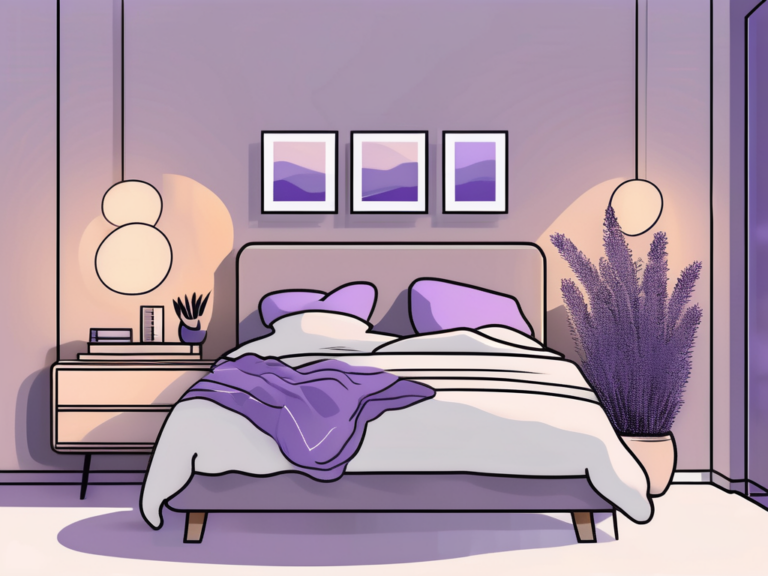understanding narcolepsy vs sleep apnea
Sleep disorders can have a profound impact on our lives, affecting our health, relationships, and overall well-being. Two common sleep disorders that often confuse people are narcolepsy and sleep apnea. In order to better understand the differences between these two conditions, it is important to define each one and explore their symptoms, causes, diagnosis, treatment, and prevention.
Defining Sleep Disorders
Before delving into the specifics of narcolepsy and sleep apnea, it is important to have a clear understanding of what sleep disorders are. Sleep disorders encompass a wide range of conditions that disrupt normal sleep patterns. These disorders can cause difficulties with falling asleep, staying asleep, or experiencing restorative sleep.
When it comes to sleep disorders, it is crucial to recognize that they can have a significant impact on an individual’s overall well-being. The consequences of sleep disorders extend far beyond feeling tired during the day. Chronic sleep deprivation can lead to a variety of health issues, including increased risk of cardiovascular diseases, obesity, diabetes, and impaired cognitive function.
Furthermore, sleep disorders can have a profound effect on one’s mental health. Sleep deprivation has been linked to an increased risk of developing mood disorders such as depression and anxiety. It can also exacerbate existing mental health conditions, making it even more challenging for individuals to manage their symptoms effectively.
What is Narcolepsy?
Narcolepsy is a chronic neurological disorder that affects the brain’s ability to regulate sleep-wake cycles. People with narcolepsy often experience excessive daytime sleepiness and sudden, uncontrollable episodes of sleep, known as “sleep attacks.” These sleep attacks can occur at any time, making it difficult for individuals with narcolepsy to maintain a normal daily routine.
In addition to excessive daytime sleepiness, narcolepsy can manifest in other ways as well. Some individuals may experience cataplexy, which is the sudden loss of muscle tone triggered by strong emotions such as laughter or surprise. This can result in temporary paralysis, making it challenging for individuals to move or speak for a brief period.
Living with narcolepsy can be incredibly challenging, as it often requires individuals to make significant adjustments to their daily lives. Simple tasks that others may take for granted, such as driving or attending social events, can become daunting for someone with narcolepsy. However, with proper management and support, individuals with narcolepsy can lead fulfilling lives.
What is Sleep Apnea?
Sleep apnea, on the other hand, is a sleep disorder characterized by pauses in breathing or shallow breaths during sleep. These pauses, called apneas, can occur due to a partial or complete obstruction of the upper airway. As a result, individuals with sleep apnea may experience loud snoring, gasping for air, and fragmented sleep throughout the night.
It is important to note that sleep apnea is not just a mere annoyance that disrupts one’s sleep. If left untreated, it can have serious health consequences. Sleep apnea has been associated with an increased risk of high blood pressure, heart disease, stroke, and even sudden cardiac death. Additionally, the constant interruptions in sleep can lead to chronic fatigue, decreased productivity, and impaired cognitive function.
There are different types of sleep apnea, including obstructive sleep apnea (OSA), central sleep apnea (CSA), and complex sleep apnea syndrome (CSAS). OSA is the most common form, occurring when the muscles in the throat fail to keep the airway open during sleep. CSA, on the other hand, is caused by a failure of the brain to transmit the proper signals to the muscles that control breathing. CSAS is a combination of both OSA and CSA.
Recognizing the signs and symptoms of sleep apnea is crucial for early diagnosis and treatment. If you or someone you know experiences excessive daytime sleepiness, loud snoring, or pauses in breathing during sleep, it is essential to consult a healthcare professional for a proper evaluation and potential treatment options.
Symptoms and Signs
The symptoms and signs associated with narcolepsy and sleep apnea can significantly impact a person’s quality of life, productivity, and overall health. It is important to recognize these symptoms in order to seek appropriate treatment and support.
Recognizing Narcolepsy Symptoms
Narcolepsy is often characterized by excessive daytime sleepiness, which can make it extremely difficult for individuals to stay awake and alert throughout the day. This constant feeling of drowsiness can have a profound effect on a person’s ability to concentrate, perform tasks, and engage in daily activities. Imagine struggling to stay awake during an important meeting or while driving, putting not only your own life at risk but also the lives of others on the road.
In addition to sleepiness, individuals with narcolepsy may experience sudden loss of muscle tone, known as cataplexy. This can result in episodes of muscle weakness or even complete collapse, making it challenging to carry out simple tasks such as holding a cup or walking up a flight of stairs. These episodes can be triggered by strong emotions such as laughter, surprise, or anger, adding an extra layer of complexity to managing daily life with narcolepsy.
Furthermore, narcolepsy can also bring about hallucinations and sleep paralysis. Imagine waking up from a deep sleep and being unable to move or speak, feeling a heavy weight on your chest, and seeing vivid and often terrifying images that seem real. These hallucinations can be incredibly distressing and can make individuals hesitant to fall asleep, leading to further sleep deprivation and worsening of symptoms.
Identifying Sleep Apnea Signs
Sleep apnea is commonly associated with loud snoring and frequent interruptions in breathing during sleep. These interruptions, known as apneas, can last for several seconds and can occur multiple times throughout the night. As a result, individuals with sleep apnea often experience poor sleep quality, leading to morning headaches and daytime fatigue.
The constant struggle to breathe properly during sleep can also lead to irritability and difficulty concentrating during the day. Imagine feeling like you haven’t had a good night’s rest in years, constantly battling fatigue and struggling to focus on even the simplest tasks. This can have a significant impact on a person’s mood, relationships, and overall well-being.
Often, individuals with sleep apnea may also report waking up frequently throughout the night. These awakenings can be disruptive and can prevent individuals from entering the deep, restorative stages of sleep. As a result, they may wake up feeling unrefreshed and groggy, despite having spent a seemingly adequate amount of time in bed.
Causes and Risk Factors
In order to effectively manage and prevent narcolepsy and sleep apnea, it is important to understand their underlying causes and associated risk factors. By delving deeper into these topics, we can gain a clearer understanding of the complexities surrounding these sleep disorders.
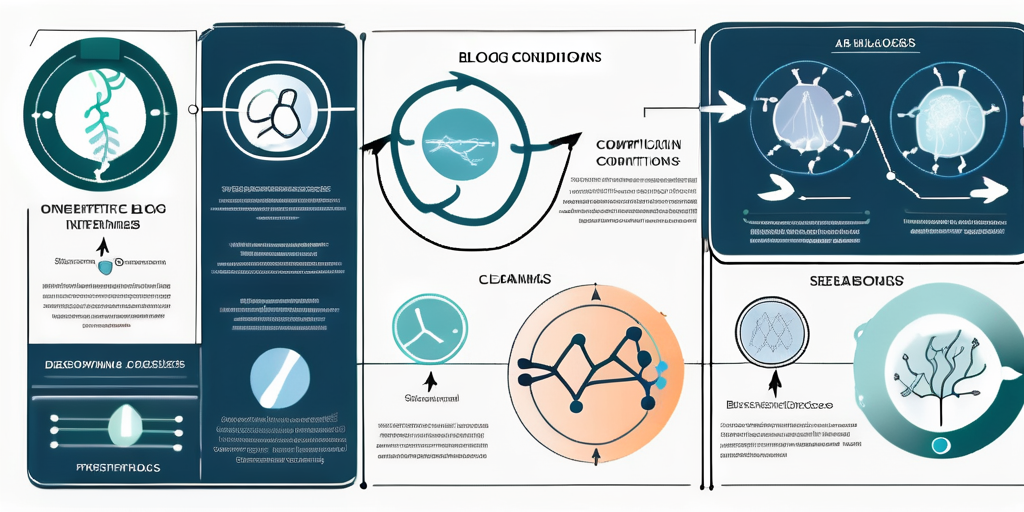
Uncovering the Causes of Narcolepsy
The exact cause of narcolepsy is still not fully understood, leaving researchers intrigued and determined to unravel its mysteries. While the origins of this disorder remain elusive, scientists have made significant strides in identifying potential contributing factors. It is believed that narcolepsy may be caused by a combination of genetic and environmental influences, working in tandem to disrupt the delicate balance of our sleep-wake cycles.
Recent studies have shed light on a fascinating theory that suggests narcolepsy may result from an autoimmune response. This intriguing hypothesis proposes that the body’s immune system mistakenly attacks and destroys certain brain cells responsible for regulating our sleep patterns. This autoimmune response, in turn, disrupts the normal functioning of key neurotransmitters involved in promoting wakefulness and suppressing sleep, leading to the characteristic symptoms of narcolepsy.
Risk Factors for Sleep Apnea
When it comes to sleep apnea, understanding the risk factors is crucial in order to identify those who may be more susceptible to this condition. By recognizing these factors, healthcare professionals can implement targeted interventions and preventive measures to mitigate the impact of sleep apnea.
One of the most prominent risk factors for sleep apnea is obesity. Excess weight can contribute to the narrowing of the airways, making it more difficult for air to flow freely during sleep. This obstruction can lead to disrupted breathing patterns, causing frequent awakenings throughout the night. Additionally, smoking, alcohol and sedative use have also been linked to an increased risk of sleep apnea. These substances can relax the muscles in the throat, further exacerbating airway blockages and breathing difficulties.
Furthermore, certain medical conditions such as hypertension and diabetes have been associated with an elevated risk of sleep apnea. The intricate interplay between these conditions and sleep apnea is still being explored, but it is believed that the physiological changes and imbalances caused by these diseases can contribute to the development or worsening of sleep apnea symptoms.
It is worth noting that sleep apnea is more commonly observed in males and tends to become more prevalent with age. While the reasons behind these demographic trends are not yet fully understood, ongoing research aims to shed light on the underlying mechanisms and potential gender-specific factors that may influence the occurrence of sleep apnea.
Diagnosis and Testing
In order to accurately diagnose narcolepsy and sleep apnea, various tests and evaluations are conducted by healthcare professionals. These tests are essential for determining the underlying causes of these sleep disorders and developing an appropriate treatment plan.
How is Narcolepsy Diagnosed?
Diagnosing narcolepsy involves a thorough evaluation of a person’s medical history, sleep patterns, and symptoms. Healthcare professionals take into account the frequency and intensity of excessive daytime sleepiness, sudden loss of muscle tone (cataplexy), hallucinations, and sleep paralysis. Understanding the patient’s medical history is crucial as it helps identify any potential triggers or underlying conditions that may contribute to narcolepsy.
Furthermore, a sleep study called a polysomnogram may also be conducted to monitor brain activity, eye movement, and other physiological parameters during sleep. This comprehensive test provides valuable information about the individual’s sleep architecture and helps identify any disruptions or abnormalities that may be indicative of narcolepsy. Additionally, a multiple sleep latency test may be performed to evaluate daytime sleepiness. This test measures how quickly a person falls asleep during the day and assesses their tendency to enter rapid eye movement (REM) sleep.
Tests for Sleep Apnea
The diagnosis of sleep apnea often involves a combination of a sleep study and the analysis of symptoms reported by the individual. Sleep apnea is characterized by repetitive pauses in breathing during sleep, which can lead to fragmented sleep and excessive daytime sleepiness.
A polysomnogram, similar to the one used for narcolepsy diagnosis, is conducted to measure breathing patterns, oxygen levels, heart rate, and other critical factors during sleep. This test helps determine the severity of sleep apnea and identifies the specific type of sleep apnea, whether it is obstructive sleep apnea (OSA), central sleep apnea (CSA), or a combination of both. By analyzing the data collected during the sleep study, healthcare professionals can assess the frequency and duration of breathing interruptions, as well as the impact on sleep quality.
In some cases, a portable home sleep apnea test may be used for diagnosis and monitoring. This test allows individuals to undergo a sleep study in the comfort of their own homes, using portable devices that measure breathing patterns, oxygen levels, and other relevant parameters. While it may not provide as comprehensive data as an in-lab sleep study, a home sleep apnea test can still provide valuable insights into the presence and severity of sleep apnea.
Treatment Options
While narcolepsy and sleep apnea can significantly impact daily life, there are various treatment options available to manage these conditions. It is important to find the right treatment plan that suits your individual needs and helps improve your quality of life.
Managing Narcolepsy
Narcolepsy treatment may involve a combination of medication, lifestyle changes, and behavioral therapies. Stimulant medications, such as modafinil or armodafinil, can help individuals with narcolepsy stay awake during the day, reducing excessive daytime sleepiness. These medications work by stimulating the brain to increase alertness and reduce the frequency of sudden sleep attacks.
In addition to medication, lifestyle changes can also play a crucial role in managing narcolepsy symptoms. Establishing a consistent sleep schedule is important, as it helps regulate your body’s natural sleep-wake cycle. This means going to bed and waking up at the same time every day, even on weekends. Practicing good sleep hygiene, such as creating a comfortable sleep environment and avoiding stimulants like caffeine close to bedtime, can also improve the quality of your sleep.
Behavioral therapies, such as cognitive behavioral therapy for insomnia (CBT-I), can be beneficial for individuals with narcolepsy. CBT-I focuses on identifying and changing negative thoughts and behaviors that may contribute to sleep problems. It can help improve sleep quality and reduce the frequency of sleep disruptions.
Treating Sleep Apnea
The treatment options for sleep apnea include continuous positive airway pressure (CPAP) therapy, oral appliances, weight loss, and in some cases, surgery. The choice of treatment depends on the severity of your sleep apnea and your individual preferences.
CPAP therapy is considered the gold standard treatment for obstructive sleep apnea. It involves wearing a mask that delivers a constant flow of air, keeping the airway open during sleep. This helps prevent the collapse of the airway and reduces the frequency of breathing pauses and snoring. CPAP machines come in various styles and sizes, allowing you to find the one that is most comfortable for you.
Oral appliances, also known as mandibular advancement devices, can be an alternative treatment option for mild to moderate sleep apnea. These devices are custom-made to fit your mouth and work by repositioning the jaw to keep the airway aligned. They are portable, easy to use, and can significantly improve sleep quality.
Weight loss can also play a significant role in reducing the severity of sleep apnea symptoms. Excess weight can contribute to the narrowing of the airway, making it more likely to collapse during sleep. Losing weight through a combination of a healthy diet and regular exercise can help alleviate sleep apnea symptoms and improve overall health.
In some cases, surgery may be recommended to treat sleep apnea. Surgical procedures aim to remove or reduce the excess tissue in the throat or correct structural abnormalities that contribute to airway obstruction. However, surgery is usually considered as a last resort when other treatment options have been unsuccessful or if there are specific anatomical issues that can be addressed surgically.
Living with Sleep Disorders
Living with a sleep disorder can be challenging, but with the right support and lifestyle adjustments, individuals can lead fulfilling lives.

Lifestyle Changes for Narcolepsy Patients
Narcolepsy is a neurological disorder that affects the brain’s ability to regulate sleep-wake cycles. It can cause excessive daytime sleepiness, sudden loss of muscle tone (cataplexy), hallucinations, and sleep paralysis. Coping with narcolepsy requires a multifaceted approach, including lifestyle changes.
Narcolepsy patients can benefit from maintaining a regular sleep schedule, allowing for scheduled naps, and avoiding activities that can trigger sleep attacks, such as driving or operating heavy machinery. By prioritizing sleep and creating a sleep-friendly environment, individuals with narcolepsy can manage their symptoms effectively.
Furthermore, it is crucial for narcolepsy patients to communicate with family, friends, and employers about the condition. By educating others about narcolepsy and its impact on daily life, individuals can foster understanding and garner the support they need. This support network can play a significant role in helping narcolepsy patients navigate the challenges they face.
Coping Strategies for Sleep Apnea
Sleep apnea is a common sleep disorder characterized by pauses in breathing or shallow breaths during sleep. These pauses can last from a few seconds to minutes and can occur multiple times throughout the night. The most common type of sleep apnea is obstructive sleep apnea, which is caused by a blockage of the airway.
Individuals with sleep apnea can improve symptoms and overall well-being by implementing certain coping strategies. Maintaining a healthy weight is essential, as excess weight can contribute to airway obstruction. By adopting a balanced diet and engaging in regular exercise, individuals can reduce the severity of their sleep apnea symptoms.
Avoiding alcohol and sedatives before bedtime is another crucial step in managing sleep apnea. These substances can relax the muscles in the throat, leading to increased airway collapse during sleep. By abstaining from these substances, individuals can promote better breathing patterns and reduce the frequency of apnea events.
Additionally, adjusting sleep positions can help minimize airway obstruction. Sleeping on the side rather than the back can prevent the tongue and soft tissues from blocking the airway. Some individuals find relief by using specialized pillows or positional therapy devices that encourage side sleeping.
Lastly, incorporating relaxation techniques into the daily routine can promote better sleep quality for individuals with sleep apnea. Deep breathing exercises, meditation, and yoga can help reduce stress and tension, allowing for a more restful night’s sleep.
Prevention and Control
While there is no surefire way to prevent narcolepsy or sleep apnea, adopting healthy lifestyle habits can help reduce the risk and manage the conditions.
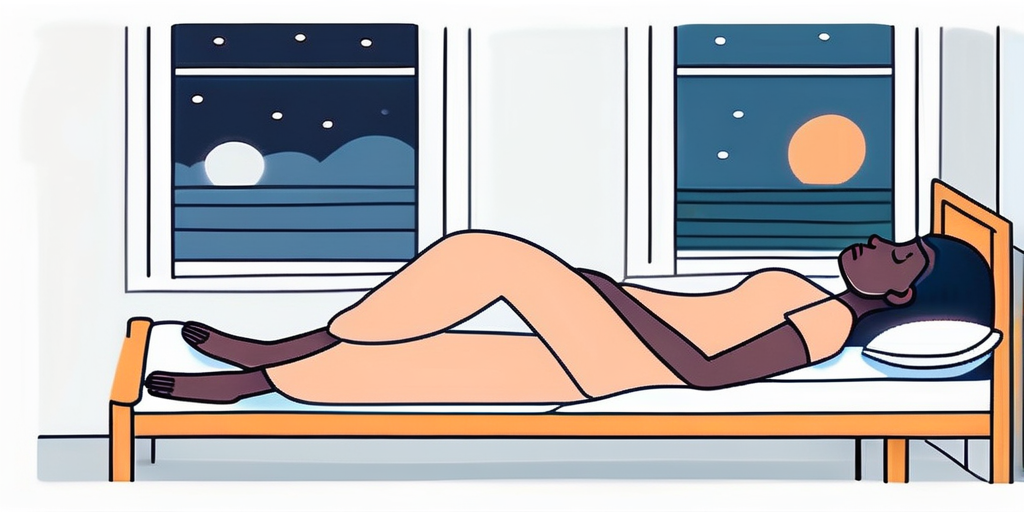
When it comes to preventing narcolepsy, it’s important to note that currently, there is no known way to completely prevent this neurological disorder. However, there are certain steps you can take to potentially reduce the severity of symptoms and improve your overall quality of life.
One of the key strategies in managing narcolepsy is to establish and maintain a regular sleep schedule. This means going to bed and waking up at the same time every day, even on weekends. By doing so, you can help regulate your body’s internal clock and promote better sleep quality.
In addition to a consistent sleep schedule, adopting a healthy lifestyle is crucial. This includes engaging in regular physical activity, eating a balanced diet, and managing stress levels. Exercise can help improve sleep quality and promote wakefulness during the day, while a nutritious diet can provide the necessary nutrients to support overall health and well-being. Managing stress through relaxation techniques, such as deep breathing exercises or meditation, may also help reduce the impact of narcolepsy symptoms.
When it comes to controlling sleep apnea, lifestyle modifications play a significant role in reducing risk factors and managing the condition. One of the most important steps is maintaining a healthy weight. Excess weight can contribute to the narrowing of the airways, increasing the likelihood of breathing difficulties during sleep. By adopting a balanced diet and engaging in regular physical activity, you can achieve and maintain a healthy weight, potentially reducing the severity of sleep apnea symptoms.
Furthermore, it’s crucial to avoid smoking and limit alcohol consumption. Smoking can irritate the airways and worsen sleep apnea symptoms, while alcohol can relax the muscles in the throat, leading to increased breathing difficulties during sleep. By abstaining from smoking and moderating alcohol intake, you can help improve your sleep apnea management.
Seeking treatment for any underlying medical conditions that may contribute to sleep apnea is also essential. Conditions such as allergies, nasal congestion, or hormonal imbalances can exacerbate sleep apnea symptoms. Consulting with a healthcare professional to address these underlying issues can significantly improve the effectiveness of sleep apnea management.
Regular medical check-ups are crucial for individuals with narcolepsy or sleep apnea. These check-ups allow healthcare professionals to monitor your condition, assess the effectiveness of your treatment plan, and make any necessary adjustments. Adherence to recommended treatment plans, including the use of continuous positive airway pressure (CPAP) machines for sleep apnea, is vital for successful management.
Conclusion
In conclusion, understanding the differences between narcolepsy and sleep apnea is crucial for those seeking to improve their sleep quality and overall well-being. While narcolepsy is characterized by excessive daytime sleepiness and uncontrollable sleep attacks, sleep apnea is marked by pauses in breathing during sleep. Proper diagnosis, treatment, and lifestyle adjustments are key to managing these conditions and living a fulfilling life. By taking the necessary steps to recognize, prevent, and control sleep disorders, individuals can pave the way for better sleep and a healthier future.


